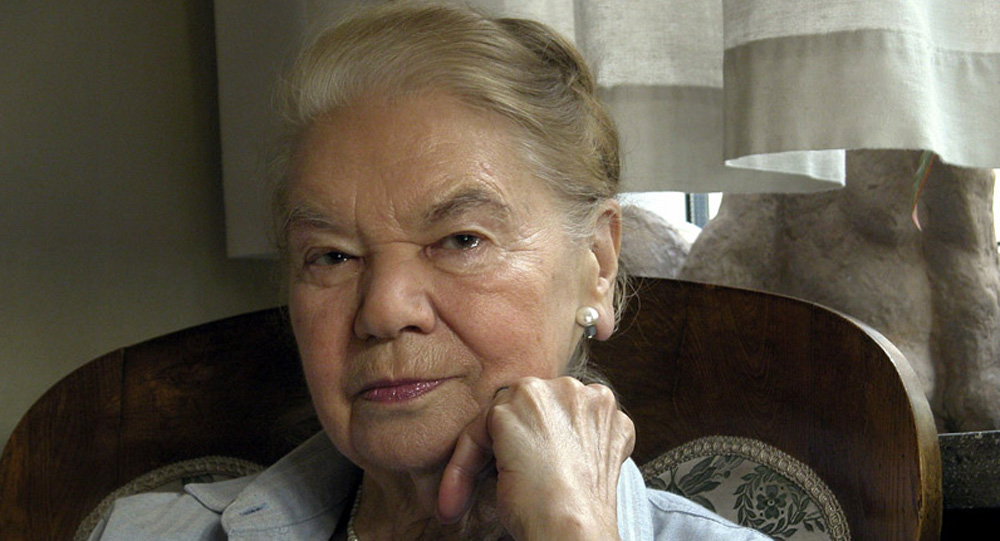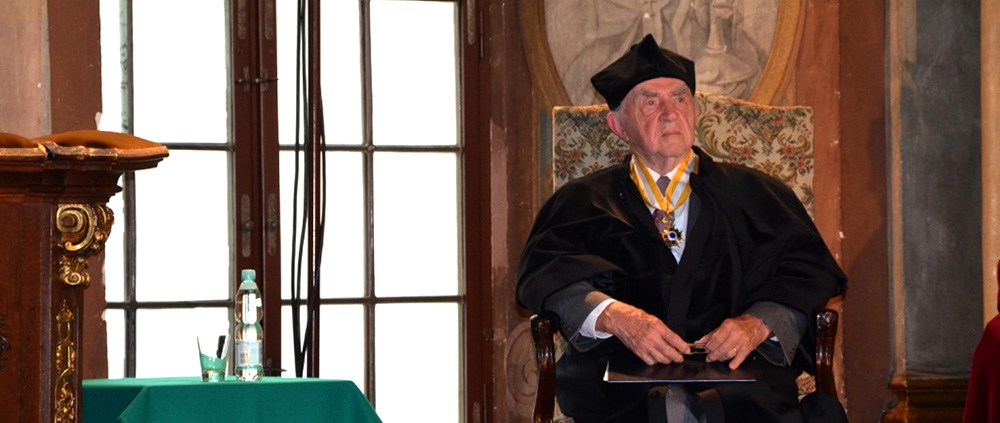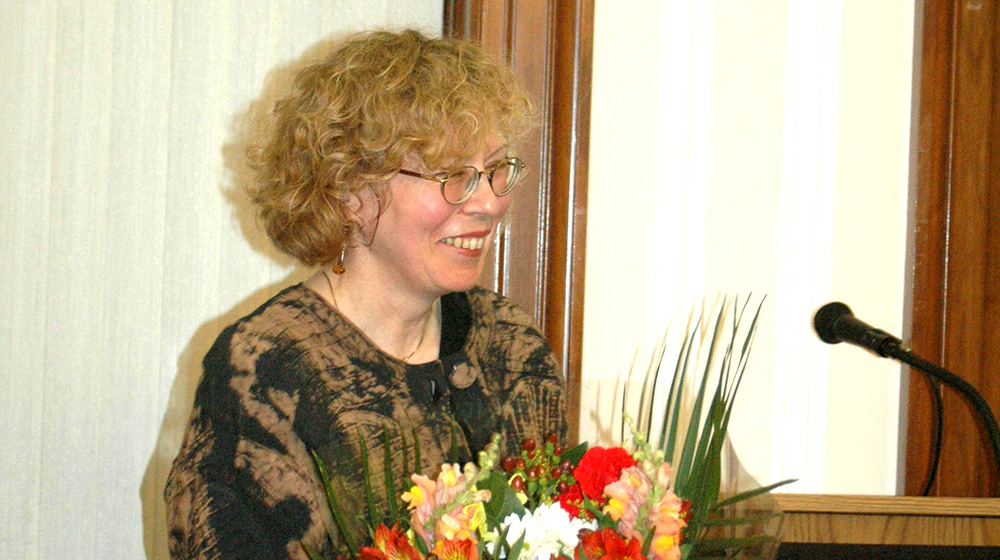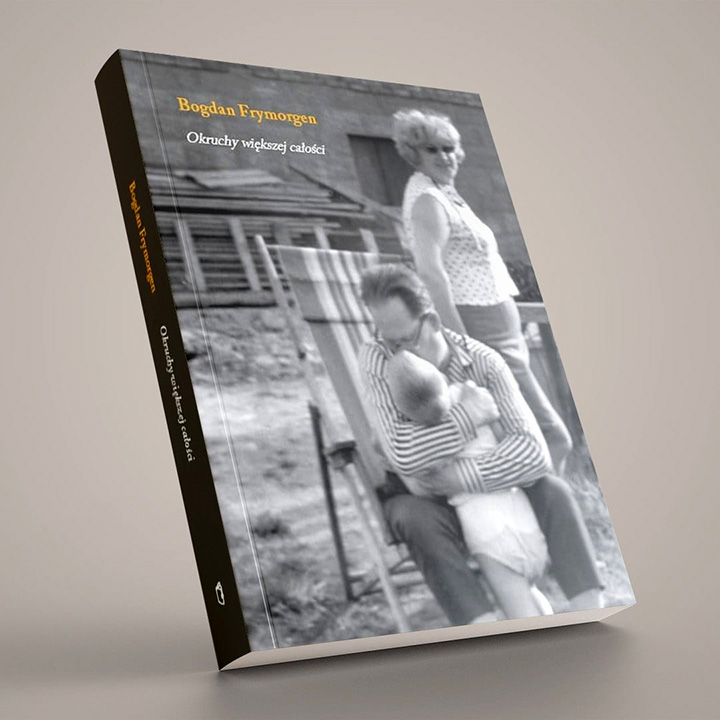
Interview with Bogdan Frymorgen, a Polish-British journalist and photographer, whose literary debut Okruchy większej całości (“Crumbs of a Bigger Picture”) deals with the memories of his childhood marked with the family struggles with father’s bipolar disease.
By Bożena U. Zaremba
*
A literary debut at the age of 58 is quite unusual. However, writing has been part of your professional life for many years.
When someone called my book a debut, I was shocked. This manuscript came to life in a very natural way, without any plans for publication. It has also been called a biography, but I am not describing my life here, rather some snips of my memory, which I decided to evoke when the pandemic shut us all at our homes. In the evenings, when my family went to bed, my dog Siena made herself comfortable at my side; I opened my computer and typed my thoughts. But it is true, I have indeed been dealing with the word for quite some time – as a correspondent for the Polish Radio RMF FM, and before, when I worked for BBC. Let me stress – I work with the Polish language. This is important to remember because, after having lived in Great Britain for 35 years, working among and socializing with the English, if I were to speak in public or write, I would choose the English language. However, this book had to be written in Polish because this is the language of my memory, my childhood, the language I grew up with. I have always made every effort to cultivate my Polish – first of all, because this is the source of my income as a journalist, and secondly because I wanted my kids to be proficient. We have always spoken Polish at our home, and my grown-up sons – one is 30, the other is 27 – are bilingual and bicultural. I suspect you would never realize they were born, raised, and educated here. So, to sum up, this is a strange debut. Before this book, I had published photo albums with some text, but there, the writing is minimalistic, simple, yet precise.
You once said this book resulted from a need to untie some knots—to organize and simplify certain events from your life.
That is what I do in my photography, which has cunningly sneaked into this book. You could say that this book is a collection of photo frames from the past, which I recollect with great photographic precision and make them live, either through motion, sound, smell, emotions, or words. Still, even though all events are organized more or less in chronological order, my writing was not linear. Each chapter was born out of a spur-of-a-moment, out of some emotional craving. The chronology of my memory was the key.
You claim Carl Gustav Jung – creator of analytical psychology and psychotherapy – as one of your inspirations. Was writing a form of katharsis?
My writing was a natural continuation of the psychotherapy which I had undergone a few years ago. I have always been interested in Jung’s philosophy and in him as a person. When I turned 50 – and let’s face it, this is a pivotal moment in one’s life – I decided to give myself a gift in the form of ten therapy sessions. Besides, I have often heard from my wife (mainly during some spats) that my father was crazy, so I need to go to therapy [smiles]. I tried to resist it because I was certain that I had “processed” my father. However, we became empty-nesters, we paid off our mortgage, and, after 24 years, I retired from my work at BBS. These were quite critical turning points. During those sessions, it turned out pretty quickly that, although I had completely dealt with my father, with his mental disorder and growing up at a home that was saturated with his bipolar disease, I had not sorted out my grandmother nor my mother, and there were still some things I needed to settle with my brother. Suddenly, some of my soul’s “glands” opened, and I was able to talk about all those things comfortably. During those sessions, some truly incredible and revelatory matters revealed themselves. In such moments, you don’t believe what you are hearing is actually coming out of your mouth. This can result in the reprogramming of your consciousness and subconsciousness. I must say, this was absolutely mind-blowing. When I was giving these thoughts some literary form, I was physically shaking because, suddenly, it turned out that I was capable of liberating an event from the past that had been deeply buried in my subconsciousness. These moments are the strongest in the book, but I am not going to tell which. So, since the book is an extension of therapy, it became a therapy in itself.
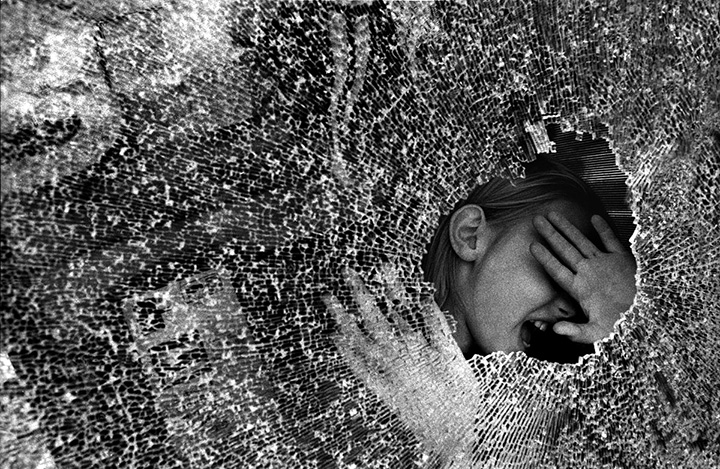
Your stories are universal, and the book has been enthusiastically received. The aspect most commonly commented on is the honesty of your writing and lack of retouching. A Polish poet, Marcin Zygadło commented, “Frymorgen is a cautious photographer; he does not use filters. His lenses show the world without pretense…as if the author wanted to expose himself completely.” Was it so? Or did you keep some events secret, known only to you or perhaps your close ones?
But, of course! I wrote some chapters that could never become part of the book. I had to exercise some restraint. The most difficult chapter was about my brother. It is harshly sincere, but it was written with love. My brother senses and knows perfectly well that this is not an easy subject, but this book would not be possible without it because my brother filled a huge part of my life in the same way as my mother and father did. But I do not expose anything here. I went through a sort of transformation; in other words, I simplified some things inside of me. This is exactly what I do in my photography – I have always strived to create a clear-cut order in my photographic frames by getting rid of unnecessary elements. I have forever been interested in showing the desolation and silence, especially when I was surrounded by noise and fuss. That was the case with the shots of my kids, which started my so-called photographic career. They show my sons as lonely, quiet, and small creatures. When my wife saw those photos for the first time at an exhibition in Krakow, she could not believe they showed our sons. She remembered those moments as the time of clamor, screaming, bickering, and fighting. In contrast, I was looking for some calm. I sneaked into that crack and snapped a shot. In my book, I became a photo frame. In other words, I took that core of my photography and simplified and cleaned my humanity. That’s reflected in the language – there are no unnecessary words there; each word is chosen with a great degree of precision. When I was editing the manuscript, I tried to get rid of superfluous props. I hardly ever added anything – it was mainly cutting until I reached the point when deleting one word would cause the whole structure to collapse, just like a house of cards. Then I knew that was it.
You are being hard on your grandmother, I must say.
This came out of me spontaneously, like an exorcism. I expressed my contempt – I don’t want to use stronger words – towards my grandmother; it’s bitter story, and that was it. With my brother, on the other hand, the narrative is different because I know why he acted the way he did. He was four and a half years older than me and had experienced much more of my father’s illness. When I joined the “team,” I became a clown who made everyone laugh, while my brother had a different role – he had to provide support to our mother and be a confidante, which is a very heavy cross to carry. He still carries it to this day. I missed certain aspects of my relationship with my mother and my brother, but at some point, I realized that it gave me independence, which, in turn, helped me organize my life the way I wanted.
You write about your father and the struggle of the whole family with his bipolar disease quite blatantly and without any sentimentality, but at the same time, with lots of sensitivity, love, respect, and affection.
I could not do it any other way because, despite this abnormal situation, my childhood was filled with warmth, love, and the physical display of affection. In the beginning, I did not realize the tragic nature of the situation. As I write in the book, this was bread and butter – sometimes with jam, sometimes with mustard. I saw it as something natural, and, depending on my age, I understood it to the extent a child can.
How do you remember your father now?
I had two fathers. During the emotional highs, the so-called mania, my father became an innovator and a crazy inventor; he was a magic persona like a character from Garcia Marquez’s novel. The other unveiling, when my father fell into depression and plunged into such a state of catatonia that we thought he was going to die, was much more challenging. But since my mother, whom I call “Great She-Bear,” watched over us, I got everything a child should get – warmth, care, and safety. At least I felt safe because I understood the language, and I knew when the next mood swing was coming. A strange word or sentence at the table was enough for us to realize that we needed to change gear. Since we had this covered because we had dealt with the situation many times before, we operated like a Swiss watch. Everyone knew what to do. My job was to talk to the orderly. I always asked them to leave the straitjacket in the ambulance because just the sight of it drove my father mad. I was growing up, and so was my understanding of this mental condition. The terminology kept changing, from manic depression to affective bipolar disorder, but the disease remained the same.
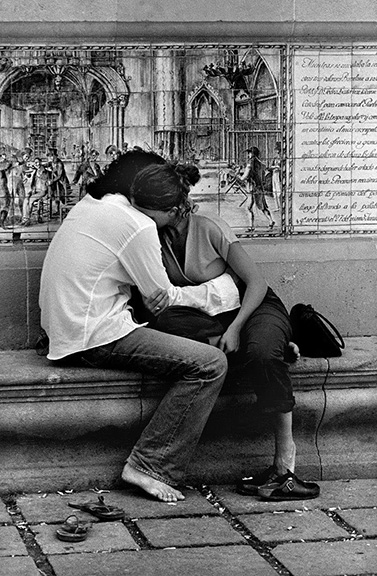
Photo: Bogdan Frymorgen 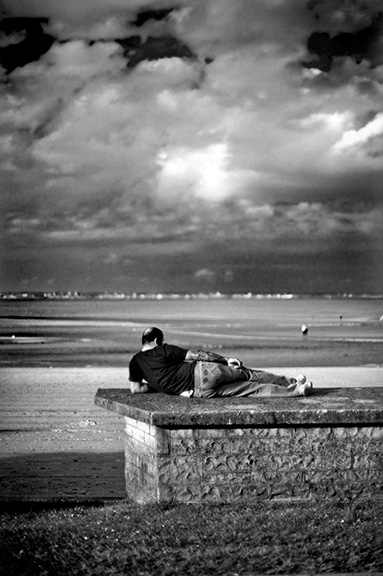
Photo: Bogdan Frymorgen
It turns out that many famous people suffered from this disease, such as Robert Schumann, Gustav Mahler, Edward Munch, Isaak Newton, Graham Greene, or Frank Sinatra, and many times it ended with suicide (Ernest Hemingway, Vincent van Gogh, and Virginia Woolf). Do you think that lack of support could have played some role?
The people you have mentioned were exceptionally talented and sensitive. This disease likes such people. However, it is important to realize that this mental condition can have a wide range of amplitude. One can function fairly normally without the necessity of taking antidepressants for the whole life. It is true that people suffering from bipolar disorder, especially left to their own devices, have suicidal thoughts because this is a terrible disease. My father had the support of his family – his wife, sons, and the community. On the other hand, he did not have access to therapy, which is popular and accessible today. Not all people suffering from this disease have families, or their families break up. Their children give up on them or don’t know how to communicate with the sick person because if you have not learned the language and have not let it become part of your DNA, it can be difficult. I always had a gut feeling that it was my duty – although I never defined it that way – to be with and care for my father. My father died at the age I am at right now, and this is incredibly telling.
The question of genetic risk is something that comes to one’s mind naturally. In your book, you say that your mother made you and your brother believe that it was only girls that could inherit the bipolar disease, which is untrue. Did you contrive a similar tactic to protect your sons?
My mom is a sweet person, and I have no idea if what she used to say was premeditated or suggested by some professor in Krakow, where she used to go for consultations. If you keep hearing these words for all your life, you can be programmed. I never said anything like that to my sons, but I started talking very frankly about my father’s illness when they were old enough. I warned them about the destructive effect drugs can have on mental illness if one has a predisposition. This can be triggered even after one dose. Unfortunately, this has happened to some people I know. Our sons were in high school at that time, and we all know what is going on in schools, so, as the so-called responsible parent, I had to have this conversation. And one more thing – I never got the disease and never will (at my age, I can be sure), but I am absolutely aware where I came from. I am oversensitive on various levels. Still, I know where to direct this oversensitivity. My father’s illness is part of me and part of my upbringing, and I am not ashamed of it. With this book, in a way, I say goodbye to my father.
All those incredibly poignant, sometimes heart-breaking, stories together with your visual and expressive use of language would make a great screenplay.
My son has already offered to make a film based on the book, but for me, it’s too early to even think about it. Right now, I need to be humble and “process” the book and everything that is happening around it. I am enjoying its various unveilings – interviews, such as this one, and numerous comments that people, some of whom I have never met, share with me. It’s fantastic. I have also become an Ambassador of the Third Mental Health Congress.
So I have heard. How did this come about?
It was Congress that reached out to me. Why not, I thought. Obviously, I checked out what they do first because I never engage in any collaboration without verification. These are fantastic people. They work all year long, but once in three years, they organize a meeting with people from diverse background to talk about how to support people who have a mental illness. This is a grass-roots initiative. Its goal is to create local support centers for such people, especially in small towns and villages. There are 33 such centers now, and they plan to create 300. What spoke to me was that people involved in Congress struggle or have struggled with a mental illness or have encountered it in their family or community. My book became a passport to talk about mental issues with a certain dose of accountability. One of my duties is to spread the word about this initiative, and I must say, it is a great honor and pleasure.
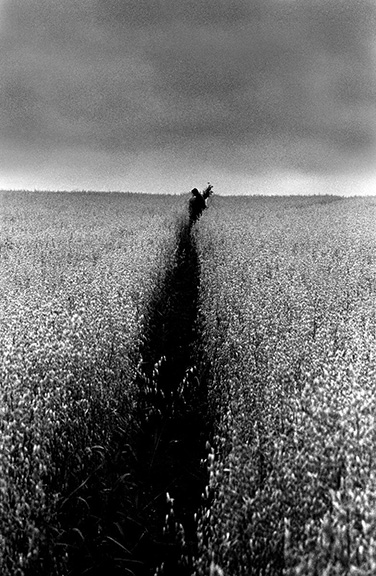
Photo: Bogdan Frymorgen 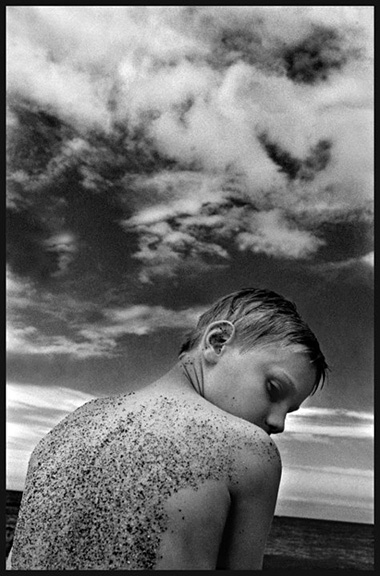
Photo of the author’s son, which was used for the cover of Paweł Huell’s novel Weiser Dawidek (Photo: Bogdan Frymorgen)
How can your story help other people?
I talk about mental illness with an open mind and heart. I am frank and use relatively straightforward language. The more often and more sincerely we talk about these issues and without any prejudice, the better for those people and their close ones. Of course, my book is my story, but this disease can turn one’s life upside down. That is why the appropriate community support, therapy, and proper medications (which can be necessary) can help those people lead a somewhat normal life, have family, and keep their job. What is more, they can help other people, just like those involved with Congress. We cannot write these people off; we cannot hide them in a cellar. They have a right to normalcy as much as their abnormal situation allows.
It is clear in the book that you have a quite disapproving attitude toward the Catholic Church – as an institution and her dogma. On the other hand, religious symbolism and lexis are omnipresent. Let me recall just a few: a group of kids dragging their friend to a religious education class is called “Christ Knights” or “The Lamb of God,” who eventually become “rams”; you refer to your mother as “Madonna of the Beskids”; doctors are “angels.” Why such imagery?
When you are born in a small village in the Beskid Mountains, in a devout Catholic family, of course, this culture becomes an inherent part of you. Such connotations come to mind naturally. Why erase them? Spiritually, I have drifted away from the Church, from the concept of God and divinity, and when I go back to my little village of Komornice, I do not feel any spiritual connection. However, the moment I smell the frankincense and hear the organ, everything starts to spin. Still, it has nothing to do with the Mystery of the Transfiguration or holy sacraments. I was baptized and confirmed, but at some point, the relationship – for various reasons – crumbled. Still, the iconography remained.
I am not accusing you of hypocrisy, mind you. I see these connotations as an interpretation of certain religious concepts or symbols—an interpretation that is alternative to the one we were and are taught. You show their contemporary dimension.
I would not go that far. I simply describe my relationship with the Church, starting with the time when I first attended the Mass and literary fainted until the moment of breaking away when I realized that the Church was unable to nourish the soul of a growing boy. I dare say that there is an ample amount of spirituality in this book – there is a look at the spiritual needs of a young man that can be satisfied outside this institution and can lead to a life lived according to a certain moral and ethical canon, which we can pass onto the next generation. That happened to me. For sure, I did not want to sound pompous. This book presents only my subjective memory, and the memory is not the truth.
Someone noticed the musical qualities of your writing and that it reads well aloud. Recently, you have announced that at the beginning of next year, you are planning to read it on the Polish Radio RMF FM.
This book is musical because there is so much music inside of me. We have known each other for quite some time, so you know well that I have always been interested in music, which fills my life 24 hours a day. That is why this book has a certain rhythm. You can sense piano and forte; sometimes you hear an orchestra and sometimes—an instrument solo.
Are you planning to have it translated?
A friend translator has offered to tackle the translation. I told him to give it a try, and we shall see. I will never do it myself because the book was borne in Polish, and I want to enclose it in my Polish-ness. Since I mention this topic, I want to stress that I live here, my family and my work are based here, I love London, but all my creative work is in Poland and for Poland. My artistic endeavors are entirely unknown in the U.K. I go to Poland quite often; I am engaged in Polish affairs on many levels; I feel I am a full-fledged and full-blooded citizen who happens to live in London. I have made myself believe that I function in two worlds.
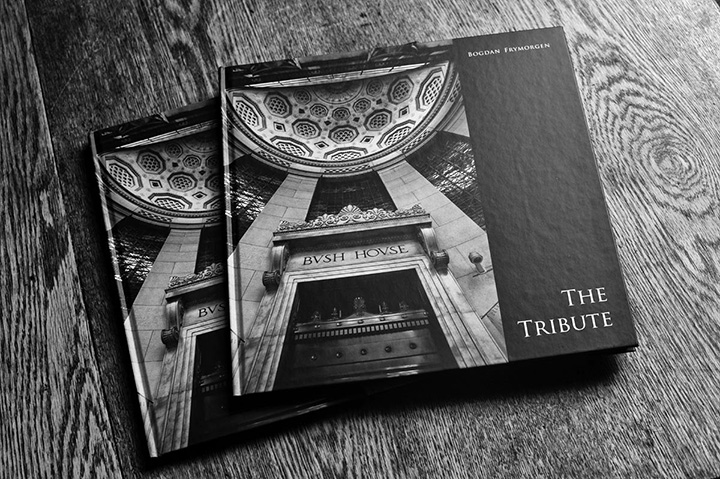
Why did you leave Poland in the first place?
I left in the mid-80s, a few years after the martial law was lifted in Poland. That was a time of hopelessness and lack of perspectives. I don’t consider myself a political emigrant, although I have always cared and been very much involved in what’s going on in Poland. For 30 years, I have been celebrating constructive progress in Poland, but now, I am bleeding inside. On the other hand, as a responsible and engaged citizen of Great Britain, I am worried about my adopted homeland, Brexit, the pandemic, not to mention what this country may face – potential Scottish independence or a unification of Ireland, which is quite conceivable.
You worked at BBC for 24 years as the so-called “studio manager.”
I enjoyed it very much. I love music and am generally very sensitive to sound. All this time, I simultaneously realized my Polish projects. I also hosted a radio program on classical music. My motto is to do as many things as possible.
The music which you consider your first love was Johan Sebastian Bach’s. In your book, you talk about your first encounter with his music played by the church organist. You even call Bach your sanctuary.
When I heard him for the first time, I didn’t know it was Bach. The only reason for my outings to church was to listen to the organ. When everybody left after the Mass, and our organist, Mr. Linert, could – at last – play freely, I was dumbfounded. By the way, his son has recently got in touch with me – he was so happy that somebody still remembered his father. I have never received any formal music education, but I tried to make up for this later in my life. I became interested in classical music, though I started with other composers. When I finally embraced Bach’s music, I never let him go. I listen to his music on a daily basis; he is my best friend, and I never feel lonely. There are other fantastic composers, but this “cathedral” is indestructible.
Let’s talk about photography. In your documentary about the British photographer, Gerald Howson, he comments on his photographs of Poland in the 50s and says that he always avoided being “too arty” or “too self-consciously poetic.” Looking at your photographs, one could assume that this has become your mantra, too.
When I met Gerald, I had been doing photography for quite some time, so I will say this – I do my own thing. However, when a fascinating person crosses my path, I drop everything and get absorbed with them entirely. It happened to me twice. First it was Gerald, and then, the Israeli writer Irit Amiel. Gerald took six years of my life, but I have no regrets. This was an incredible experience – first, when we discovered his archives with negatives that had been lying in his drawer for 50 years. Nobody had ever seen them. Then, we organized his exhibition in Krakow’s district of Kazimierz. Can you imagine those people, then in their 70’s who burst into tears once they recognized themselves in those photos as kids?! Gerald was a painter by profession, and he took photos with an eye of an artist. What is more, he had an unusual gift for talking about complicated issues in a simple language. He was an extraordinary man, and for me, a significant figure – a mentor, in a sense, although I was already 50 at that time. Irit Amiel played a similar role in my life. I fell in love with this 85-years-old woman, and the affection was mutual. Irit was born in Czestochowa as Irenka Librowicz. After miraculously surviving the ghetto, she emigrated to Israel, where she started a family and changed her name. She was an exquisite writer. I strongly recommend her autobiography Life: A Temporary Title. She showed up in my life virtually out of nowhere, but if I were to look for some divine providence, I would probably find it in such encounters, in this clash of extraordinary energies. There are still a lot of people like these out there. You just need to be open to recognize their uniqueness and offer them part of ourselves so that they do not sink into oblivion.
Tell us something about your photo albums that show the district of Kazimierz, formerly Jewish quarters.
I have published two albums, Kazimierz Without Words and, simply, Kazimierz. The former came into life out of a specific demand. In 2007, I buried my friend, Chris Schwarz, whom I helped create the Galicia Jewish Museum in Krakow. Chris left me a beautiful camera, which I kept for years on my mantel. I treated it as a relic, but at some point, I decided to touch it and take photos of Kazimierz. In this way, I paid tribute to my friend.
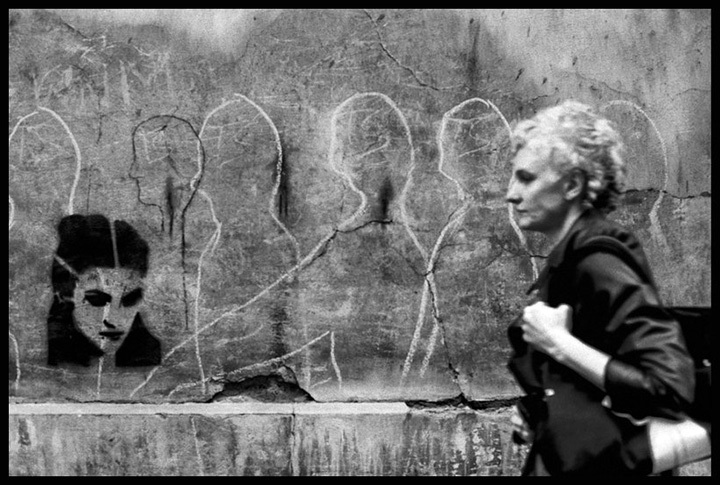
This particular photo caught my attention: a lady going about her daily matters photographed against a wall with the drawing of silhouettes, which, I assume, represent people who used to live there.
These strange outlines drawn on the wall with chalk resulted from the initiative I organized with the Galicia Museum and Chris on the anniversary of the expulsion of the Jews from Kazimierz to the ghetto on the other side of the town. We created a list of streets, and together with the Academy of Fine Arts students that I engaged, we lay on the road or glued ourselves to the wall and drew the outlines. When Kazimierz woke up on the next day, it was covered with hundreds of such silhouettes. This particular photo was taken a few years after this initiative and Chris’s death, but as you can see, some outlines are still visible.
Why did you become interested in the history of Polish Jews?
I was born 17 years after WWII, in a country where nobody talked about Jews and the Holocaust. This subject was taboo in my village, located about 12 miles from Auschwitz. I had no idea what had happened there. I went to Janusz Korczak Elementary School, and for eight years, never ever did I hear that he was Jewish. The narrative presented to us was that he was a Polish (assumed Catholic) doctor, who heroically died with Polish (assumed Catholic) children in Treblinka. When I went to high school in Bielsko-Biala, there was a chasm next to the building, where a beautiful synagogue stood before the war. During my four years at school, whenever we opened the windows to air the classroom and looked at that empty space, we had no clue. Finally, when I went to college in Krakow, I once saw the documentary Shoah by Claud Lanzaman, and the whole world crumbled. It was w mind-opener. I was in a state of shock. And revolt. And anger. I became interested in Kazimierz when I helped Chris launch the Galicia Museum. Together with my wife, we bought an apartment there, and I started exploring. My first photographs of Kazimierz were taken in 2006, but they look as if they could have been taken dozens of years ago. I dedicated my second album about Kazimierz to Irit, who wrote this inscription: “I am looking at the pages of my friend’s album… and I feel a total lack of Jewish life. For me, the whole Poland from bottom up, is one big cemetery, one painfully bleeding scar. The Polish-Jewish history is over. The album emanates this absence.” These are honest and accurate words, and what’s inside the album is just an attempt to show what is no longer there.
Why are all your photos black-and-white?
First of all, the camera I got from Chris had a black-and-white roll of film inside. Probably, if it had been a color roll, I would be taking color photos [laughs]. Secondly, I remember the black-and-white TV from my childhood, and the world on the screen seemed so authentic, honest, and genuine. Perhaps because we were children. Besides, when I study Kazimierz, I look through the eyes of people who used to live there. The same thing happens with Lanckorona*, which I see through my grandmother’s eyes. There was no color photography then. I use a digital camera, and all my photos start in color, which I eliminate later.
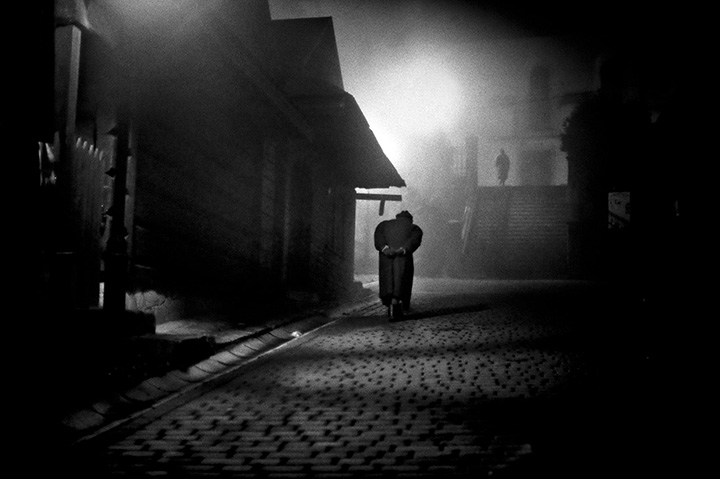
From the album dedicated to Lanckorona, I have chosen the photo showing an old lady walking towards a light, which is one of my favorite shots.
It is very telling indeed. This photo could have been taken at the end of the 19th century, but it was taken a few years ago, which is proof of what an enchanted place this is, what magical things can happen there. You just need to notice and snap them. This woman is going to church to attend Vespers, and the light you see comes from the streetlamp that stands next to the church. Only people who are familiar with this town can recognize the spot.
I see symbolism in this image—walking towards the light stands for death. There is no sadness in this shot, though.
Most of all, there is peace. The subject of death reappears in my book quite often as I am totally comfortable with the topic. Death is the same part of life as birth, and the further we go, the closer we get to it. Through photography, you can and should talk about everything. I like controversial photography; I like photographers who do thing out of the ordinary, who are not afraid to cross the lines. Truly, in art, nothing can be achieved without risk. Art without risk is just one big stereotype and is simply boring. I do not claim that what I do – either through photography or wiring – is revolutionary, but I do like to stick my head out.
(transl. buz)
*A historic and charming little town located about 20 miles south-west of Krakow.
*
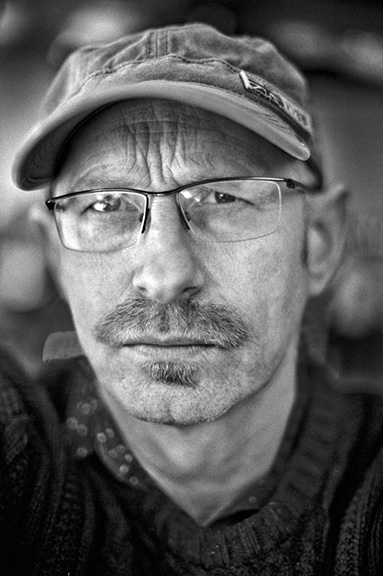
Bogdan Frymorgen is a journalist, photographer, author of a literary debut – a memoir about his childhood marked with his father’s mental illness. He studied English Language and Literature at the Jagiellonian University in Krakow. While in college, he co-founded, played the guitar, and sang in a musical trio BUS STOP, which presented mainly American folk music and won numerous awards at music festivals in Poland. Since 1986, he has been living in London. He worked as a studio manager for BBC for 24 years and hosted a radio program devoted to classical music for six years. He is a correspondent, reporter, and interviewer for the Polish Radio RMF FM. He has published the following photo albums: Kazimierz bez słów (2011), Kazimierz (2018), The Tribute (2015), dedicated to the BBS World Service headquarters (1932-2012), and Lanckorona (2015). He was a curator for a British photographer, Gerald Howson’s archives and exhibition, and made a documentary Gerald Howson: a very Polish Affair about Howson’s photos of 1950s Poland. He led the efforts to publish a bilingual collection of poetry by an Israeli poet and Holocaust survivor, Irit Amiel, Spóźniona/Delayed (Austeria). Bogdan Frymorgen collaborates with several cultural institutions in Poland. He is a member of the Polish Photographers Association and the Board of the Galicia Jewish Museum in Krakow and an ambassador of the Third Mental Health Congress. He is working on his next photo album, Human. The Polish version of the book Okruchy większej całości (2021) is available at the Austeria publisher’s website https://austeria.pl/produkt/okruchy-wiekszej-calosci/ (international shipping available). English translation pending.
*



